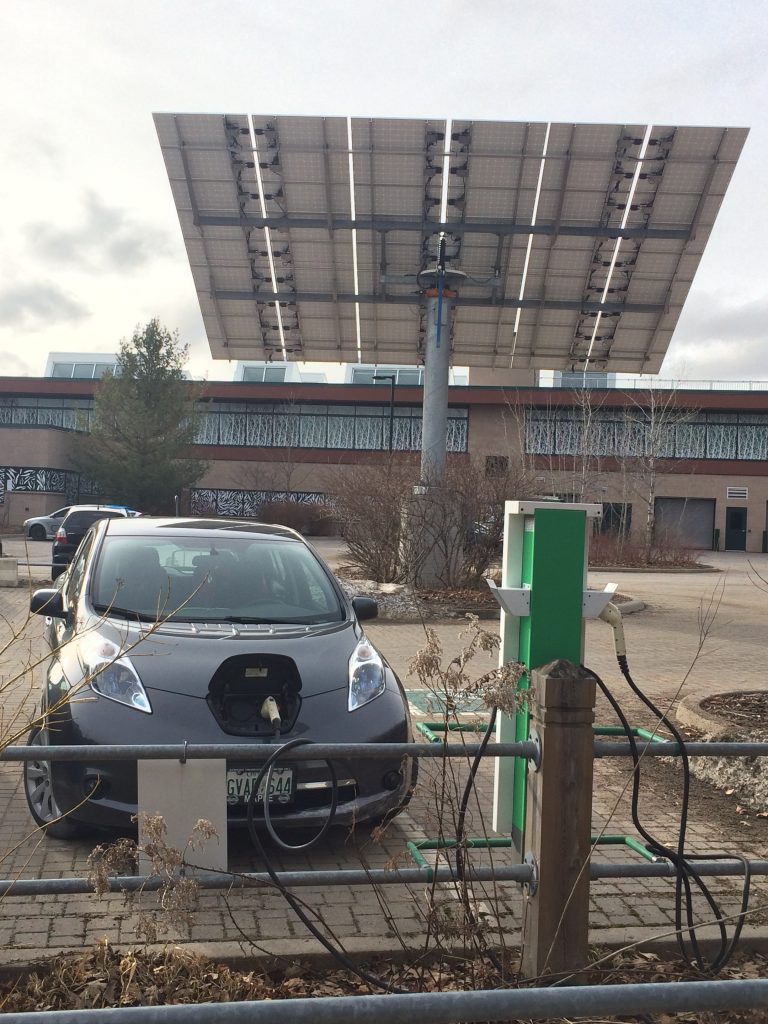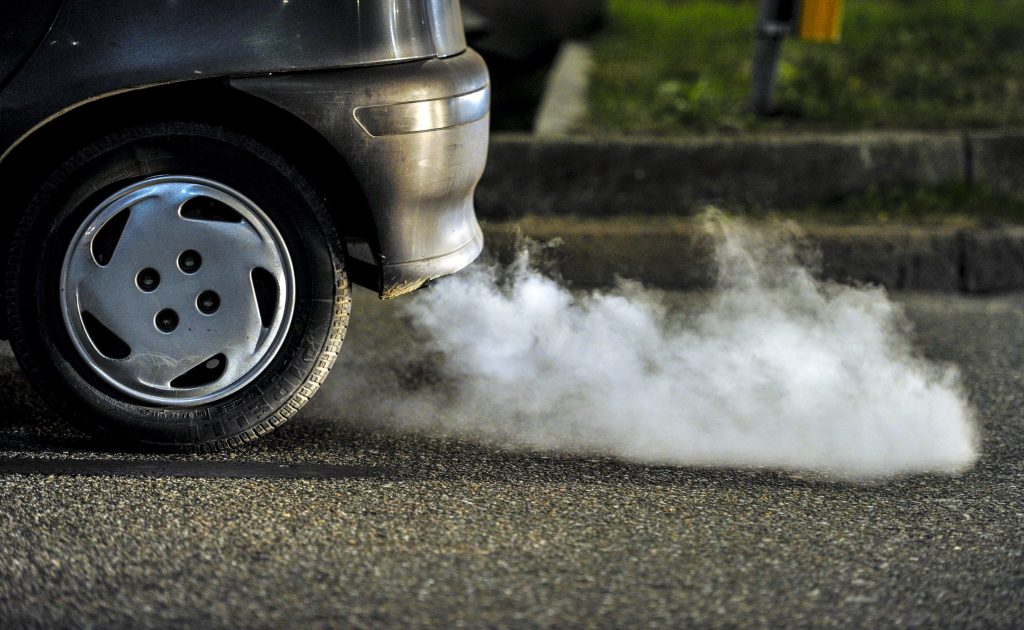Driving creates a lot more carbon pollution than you think. On top of releasing harmful emissions like nitrogen oxides that increase respiratory ailments like asthma and bronchitis, the vehicles we use to move people and goods make up about 25 per cent of total greenhouse gas emissions in Canada.
New policies are on the way in Canada to help bring these emissions down. But sorting through them can make your head spin. There are plans for policies to regulate the fuel we pump into our cars, policies to make vehicles run more efficiently, and programs to help people shift to zero emission vehicles like hydrogen or electric cars. We’ve summarized some of the big ones we hope to see making a dent in Canada’s carbon emissions in the coming years.
- Clean Fuel Standard
This is one of Canada’s most underrated strategies to fight climate change. While carbon pricing has been hogging the spotlight, the federal government has been quietly developing a new system to encourage cleaner, less carbon-intensive fuels (although it’s not new – B.C. has had a similar system since 2008).
Once implemented, this system could end up being the single largest piece of the puzzle in reducing Canada’s greenhouse gas (GHG) emissions. The estimated 30 mega tonnes per year of emissions reductions by 2030 from a clean fuel standard would be the same as taking about 6 million cars off the road for an entire year.
So what exactly are clean fuels? While fossil fuels create a lot of greenhouse gas emissions when burned for energy, alternative sources like biofuels (made from plants), electricity, and hydrogen burn much cleaner. But right now it’s hard to pull up to a gas station and demand biofuels instead of gasoline. To make the shift to cleaner fuels, we need help.
Under a Clean Fuel Standard, the government sets targets to gradually lower the overall carbon intensity of fuels used for heating, transportation, and other uses – fuels like natural gas, propane, and gasoline. Fuel producers, importers and distributors can choose how to meet these targets at the lowest cost. They can blend more biofuels in with fuels like gasoline to sell at gas stations, or they can invest in cleaner options like electric vehicles instead. The drive to keep costs as low as possible means there’s an incentive to invent new ways to deliver clean fuels to consumers as cheaply as possible.
This policy has been hailed as a smart economic move. According to Clean Energy Canada, a strong Clean Fuel Standard would drive $5.6 billion a year in economic activity and create up to 31,000 jobs.
The Clean Fuel Standard is not finalized yet, but we’re expecting to see draft legislation in 2019, with implementation around 2022.
- Greenhouse Gas (GHG) Emission Regulations for Vehicles
For years, Canada has been gradually ratcheting up fuel efficiency standards for passenger vehicles in sync with the United States. This means that every year, automakers are challenged to make their vehicles more fuel efficient, so that they use less gasoline for the same distance traveled, and releasing fewer GHG emissions. Automakers have largely been meeting this challenge with the help of new, more efficient technologies as well as introducing cleaner electric vehicles.
Stronger standards are already making a dent in GHG emissions from cars and light trucks in both countries, as well as creating more jobs and saving customers money on gasoline. But the U.S. recently threw a wrench in these plans when they announced their plan to stop strengthening their standards after 2020. California and many other states are pushing to maintain stronger standards which could create a split in the American market, and a big decision point for Canada, whose automotive industry is very closely tied to the U.S. If Canada weakens standards to match the U.S, we’ll lose important momentum on reducing carbon pollution at a critical time. This is why Environmental Defence and more than 40 other organizations and businesses recently sent a letter to Minister McKenna calling for Canada to maintain strong standards.
- Zero Emission Vehicles Strategy
This is a fancy term for government action to encourage faster adoption of electric and other clean vehicles (often called Zero Emission Vehicles or ZEVs). These vehicles produce no tailpipe emissions, and therefore will be key to meeting Canada’s target of reducing greenhouse-gas emissions to at least 30 per cent below 2005 levels by 2030.


Current EV sales make up about 1.5 per cent of a light vehicle market of more than two million. This number is rising every year as EV prices continue to fall, but sales need to rise more quickly than we’re seeing now, if we hope to seriously reduce transportation emissions. With a strong plan, governments can help remove some of the big barriers standing in the way of ZEV adoption.
There are two basic ways to fast-track EV adoption. One way is to make cleaner vehicles cheaper, since ZEVs have a higher price point (although likely not for long). This could be through incentives, tax breaks, or other tools. The second way to fast-track adoption is to improve access to ZEV’s. In most of Canada, you simply can’t find electric vehicles on the lot at dealerships, causing long waiting lists for these cars. A strong ZEV strategy should include government policies to ensure dealerships provide the vehicles consumers want. A policy like a ZEV mandate – basically a quota to increase the supply of ZEVs – has worked in California and Quebec to quickly increase sales, and is even more effective when coupled with training to enhance ZEV understanding among car dealers and mechanics selling cars.
We’re expecting the federal government to release more details on a proposed ZEV Strategy in early 2019.
- Carbon Pricing
You’ve probably heard about this one. I won’t go into much detail here (this blog has more), but a price on carbon pollution will basically make gasoline and other carbon-intense fuels slightly more expensive. This added cost will provide an important incentive for people and businesses to choose low carbon transportation options when it makes sense to do so, like walking, cycling, transit, or electric and hydrogen vehicles. These low-carbon options become more attractive to people as they become more cost-competitive, and this drives innovation to find new, cleaner ways of getting around at lower cost.


It’s clear that we need to do something to curb carbon pollution from the cars and trucks we use to get around. Transportation emissions are already too high, and are rising more quickly than any other sector. With help from strong policies – and help for consumers to make cleaner choices while staying within their budgets – these numbers could drop considerably in the next decade.









